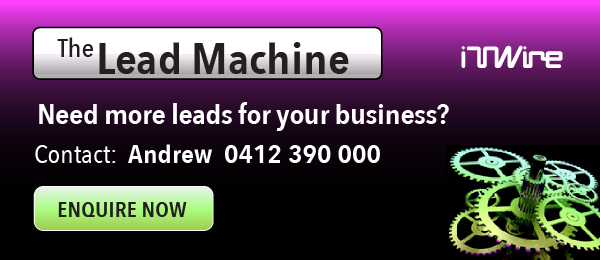IBM, Sony, Toshiba: joint microprocessor design
In a new volley in the battle for digital home entertainment, IBM., Sony and Toshiba are just announcing details of their newest microprocessor design, known as Cell, which is expected to offer faster computing performance than microprocessors from Intel and Advanced Micro Devices.
The New York Times reports (7 Feb.) that anticipation of the announcement, to be made at an industry conference in San Fransisco, has touched off widespread industry speculation over the impact of the new chip technology, which promises to enhance video gaming and digital home entertainment.
Sony plans to use the new Cell in its PlayStation 3, likely to be introduced in 2006, and Toshiba plans to use the chip in advanced high-definition televisions, also to be introduced next year.
However, the NYT says many industry executives and analysts say that Cell's impact may ultimately be much broader, staving off the PC industry's efforts to dominate the digital living room and at the same time creating a new digital computing ecosystem that includes Hollywood, the living room and high-performance scientific and engineering markets.
The paper says that Cell's introduction also comes at a time when the computer industry has largely given up investing in fundamentally new processor designs and has instead chosen to use the additional space available on the newest generation of chips to place multiple processors and thus add performance.
The Cell chip, computer experts said, could have a theoretical peak performance of 256 billion mathematical operations per second. With that much processing power, the chip would have placed among the top 500 supercomputers on a list maintained by scientists at the University of Mannheim and the University of Tennessee as recently as June 2002.
According to the NYT, several computer industry executives warned, however, that despite the Cell's impressive specifications, success is not guaranteed for any new design in the computer industry. For example, Intel and Hewlett-Packard have spent more than a decade and hundreds of millions of dollars on the Itanium and the chip has yet to find a receptive market.
The Cell has a modular design based on a slightly less powerful IBM processor that is currently in G5 64-bit desktop computers from Apple Computer. Additionally, the Cell architecture is distinguished by the fact that it controls an array of eight additional processors that the design team refers to as synergistic processing elements, or S.P.E.'s. Each of the S.P.E.'s is a 128-bit processor in its own right.
One significant risk for Sony and IBM., says the NYT, is that the Sony PlayStation 3 game machine is likely to be introduced later than the next generation of Xbox from Microsoft. The PlayStation 2 beat the Xbox to market and Microsoft was never able to catch up, meaning that it lost hundreds of millions of dollars on its bet on the video game market.
In its next version of the Xbox, Microsoft plans to shift from using Pentium chips from Intel to a PowerPC microprocessor from IBM. The chip will have two PowerPC processor cores, but it will not be as radically new as the IBM Cell design that Sony plans to use, an executive who is familiar with the Microsoft project told the NYT.
The paper concludes the report, commenting that one area of wide speculation is whether Apple might become a partner in the Cell alliance in the future. Apple is already the largest customer for the PowerPC chip, and it would be simple for the company to take advantage of the Cell design. Several people familiar with Apple's strategy, however, said that the computer maker had yet to be convinced that the Cell technology could provide a significant performance advantage.
Google loses another trademark fight
Google has lost another trademark infringement fight in Europe, this time to luxury goods company Louis Vuitton.
The Register reports (7 Feb.) that the Paris District Court has ruled that the search company's practise of selling advertising triggered by searches for trademarked brand names does infringe the Louis Vuitton trademark. It charged Google with trademark counterfeiting, unfair competition and misleading advertising and ordered the company to pay €200,000.
The online publication reports that last month, a court in Nanterre ruled similarly in favour of Le Meridian Hotels. In that case, Google was given a €2000 fine, was ordered to pay costs, and an additional €150 per day for further infringements.
In similar cases in the US, courts have sided with the search company, saying that the practice is in line with competitive advertising, and breaks no federal laws.
The Register says that Google generates around 98 per cent of its income by selling keyword-linked advertising, although not all of this is generated by competitor-linked searchers.
Skype-Hutchison delivering VoIP to Hong Kong
Skype, the Global Internet Telephony Company and Hutchison Global Communications
Limited, the operator of the largest fibre-to-the-building
network in Hong Kong, have just announced a partnership to promote and
deliver Skype software to the Hong Kong market.
HGC is the first Fixed Telecommunications Network Services
("FTNS") operator in the world to have reached a co-branding agreement
with Luxembourg-based Skype Technologies.
Under the agreement, the two partners will bring Skype to Hong Kong through a co-branded
"HGC-Skype" portal, which is scheduled to be in service next month.
The Skype deal is an initiative by HGC to realise its
partnership strategy, following the company's recent broadband/pay TV
collaboration announcement. HGC said that in delivering "multi-play" applications
and content, the company selects to partner with leading service providers.
Skype says it takes communications to a new and global era with its free,
multi-faceted and rich communication tools, enabling users to make
free voice calls and rich messaging connections via the internet.
The company is the leading VoIP-category product worldwide, with more than
24 million registered users, and more than 130,000 new users joining
per day.
EBay alters sellers' fees and adds support
EBay, the online auction site, has altered a recent decision to increase fees.
The New York Times says in a 7 February report that in a letter posted on its web site yesterday, eBay North America, said that the company would reduce certain minimum listing fees by 5 cents, to 25 cents, on its United States and Canadian web sites.
The reduction, which took effect at midnight (US time), applies to several categories of sales: auction-style listings, fixed price, motors.
The paper says that separately, within the next 90 days, the company plans to eliminate most of its automated e-mail responses and instead provide e-mail responses from customer service representatives.
Also, starting 1 April, all eBay store owners will have access to phone support, which has been available only to its biggest sellers, which it classifies as silver, gold, platinum and titanium power sellers.
Acer's Australian security breach
A security breach uncovered last week left customers of Acer's Australian store able to see other user's order histories, complete with contact details, reports The Register in the UK (7 Feb.).
The Register says that credit card details were not disclosed but complete contact information (email and phone addresses) and detailed order information was left exposed. This data, samples of which have been seen by The Register, might be used by fraudsters posing as Acer to trick users into handing over sensitive bank or credit card payment details.
Acer said it has fixed the security bug, which it described as a one-off. It notified customers by email of the breach warning users to contact Acer directly if they are phoned by anyone seeking their order or credit card details.
Intel's dual-core Itanium
Intel will this week discuss the creation of the 90nm dual-core Itanium 2 processor and detail 'Foxton', the chip maker's energy conservation system for server processors, reports The Register (7 Feb.)
The Register says that the dualie Itanium, codenamed 'Montecito', has been on Intel's roadmap for some time, but the company will use the International Solid-State Circuits Conference (ISSCC), being held in San Francisco this week, to detail its development.
Montecito contains 1.72bn transistors, many of which are dedicated to the CPU's 24MB L3 cache. That, plus the extra core and other refinements, yield an almost threefold increase in performance over the first Itanium 2s running at the same 1.6GHz clock frequency, Intel claimed.
At the same time, the chip consumes 23 per cent less power than the single core version: 100W to 130W, the chip maker said.
Enter Foxton, says the Register -- essentially a tweaked version of SpeedStep, scaling back core voltage and clock frequency according to processor load. Unlike SpeedStep, Foxton is able to raise them too, the better to deliver higher performance when it's needed, and Foxton can provide an above-the-line boost of ten per cent, Intel said.
The Register says Foxton will debut in Montecito, itself due to ship in limited numbers in Q4, but in volume in 2006. Intel also plans to add Foxton to its Xeon line.
Semicoductor companies form new advisory council
In the US, a group of leading semiconductor companies has just announced the
launch of the PISMO(TM) Advisory Council, the industry's first
organisation focused on streamlining system-level memory validation
and test.
The group will define a single, board-level interface
standard that allows designers to use a variety of memory devices on
development platforms from multiple vendors in a plug-and-play
fashion.
The PISMO Advisory Council is spearheaded by Spansion, one of
the world's leading suppliers of NOR Flash memory, and ARM(R), the
industry's leading supplier of 16- and 32-bit embedded RISC
microprocessors.
The new PISMO (Platform Independent Storage Module) standard
is expected to enable the more rapid deployment of increasingly
powerful and affordable mobile telecommunications, computing and
consumer products.
Significant growth in the wireless and embedded markets has given
rise to hundreds of new processors, chip sets and memory types that
must be tested for compatibility. Without a standard interface, system
designers must develop and use a variety of device-specific
development boards to ensure compatibility.
The PISMO interface standard will define mechanical and electrical specifications for
small form-factor memory modules.
"Memory suppliers have a responsibility to help solve the tough
development challenges that have arisen due to increased
differentiation in the memory and logic markets," said Stephen
Lapinski, vice president of systems engineering and strategic
alliances for Spansion.
"That's why we are spearheading this effort to
lead the industry in putting PISMO compliant memory modules into the
hands of customers. We are very encouraged by this strong showing of
support from industry leaders, and are confident that the council's
efforts will not only streamline development, but lead to more
feature-rich systems at affordable price points."
A variety of semiconductor companies have joined Spansion and ARM
as charter members. They include NanoAmp Solutions, a provider of
low-voltage and ultra low-power memory solutions for the wireless
communication, industrial control, automotive and medical markets;
SMedia, a supplier of innovative and high-performance 3D graphics and
multimedia ICs for handhelds; Spreadtrum, a provider of wireless
Integrated Circuits (IC) and software solutions to wireless equipment
manufacturers; and Toshiba Toshiba, a global semiconductor
company and one of the world's leading suppliers of memory products.











































